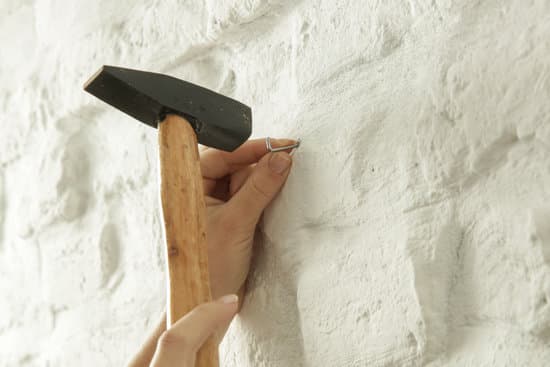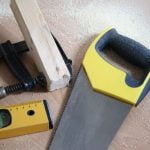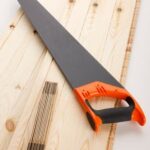When it comes to financing home improvement projects, homeowners often have various options available to them. One question that frequently arises is whether it is possible to add a home improvement loan to an existing mortgage. In this article, we will explore the basics of home improvement loans and mortgages, and delve into the advantages and process of combining the two.
Firstly, it is important to understand what home improvement loans and mortgages are. A home improvement loan is specifically designed for funding renovations, repairs, or additions to a property. On the other hand, a mortgage is a long-term loan used for purchasing or refinancing a home. Combining these two types of loans can offer several benefits for homeowners looking to make upgrades or repairs to their homes.
In the following sections, we will discuss different types of home improvement loans, the process of adding such a loan to an existing mortgage, as well as the advantages and factors one should consider before making this financial decision. Additionally, we will provide alternatives to adding a home improvement loan to your mortgage and offer tips for effectively managing this combined loan.
Through real-life case studies, we will also highlight success stories and demonstrate how adding a home improvement loan to a mortgage can positively impact your financial situation.
By providing comprehensive information on combining home improvement loans with mortgages, we aim to help readers make informed decisions for their own renovation projects. It’s crucial for homeowners to carefully evaluate their options and weigh the potential benefits and risks before deciding whether adding a home improvement loan to their mortgage is the right choice for them.
Different Types of Home Improvement Loans
When considering a home improvement project, it’s important to explore the different types of home improvement loans available. These loans can provide the necessary funds to upgrade your home, whether it’s renovating a kitchen, adding an extension, or making energy-efficient upgrades. Understanding the various options can help you make an informed decision about which loan is most suitable for your needs.
- Personal Loans: This type of loan is not tied to your property and may have higher interest rates compared to other options. However, personal loans offer more flexibility in terms of how the funds can be used and typically have a faster application process.
- Home Equity Loans: With a home equity loan, you borrow against the equity you have built in your home. This loan type offers fixed interest rates and longer repayment terms than personal loans. It is important to note that defaulting on a home equity loan could potentially result in foreclosure.
- Home Equity Line of Credit (HELOC): Similar to a home equity loan, a HELOC also uses the equity in your property as collateral. However, instead of receiving a lump sum, you are given access to a line of credit that you can draw from as needed. HELOCs often come with variable interest rates and flexible repayment options.
- Cash-Out Refinancing: Cash-out refinancing involves replacing your existing mortgage with a new one that has a higher principal balance. The difference between the two amounts is given to you in cash, which can be used for home improvements. This option allows homeowners to take advantage of potentially lower interest rates while also accessing funds for renovations.
| Type | Interest Rate | Repayment Terms |
|---|---|---|
| Personal Loans | Varies (typically higher) | Shorter repayment terms |
| Home Equity Loans | Fixed | Longer repayment terms |
| HELOC | Variable | Flexible repayment options |
| Cash-Out Refinancing | Potentially lower than current mortgage rate | Similar to existing mortgage terms |
It’s important to carefully consider the features and eligibility criteria of each type of loan before making a decision. Additionally, consulting with a financial advisor can help you determine the best option for your specific circumstances. By understanding the different types of home improvement loans available, you can confidently choose the one that aligns with your goals and financial situation.
The Process of Adding a Home Improvement Loan to Your Mortgage
The process of adding a home improvement loan to your mortgage can seem daunting, but with the right knowledge and guidance, it can be a relatively straightforward process. Here is a step-by-step guide on how to add a home improvement loan to your existing mortgage:
- Determine the scope of your home improvement project: Before you start the process, it’s important to have a clear understanding of what renovations or improvements you want to make. This will help you determine how much funding you need and what type of loan may be suitable for your needs.
- Research lenders and loan options: Once you have a clear idea of your project, research different lenders and loan options available to finance home improvements. Consider factors such as interest rates, repayment terms, and eligibility criteria. There are several types of loans available, including personal loans, home equity loans, and cash-out refinancing.
- Gather documentation: To add a home improvement loan to your mortgage, you will need to provide certain documentation such as proof of income, identification documents, proof of homeownership, copies of construction plans or quotes from contractors, and any other supporting documents required by the lender.
- Apply for the loan: Once you have chosen the lender and loan option that best suits your needs, it’s time to apply for the loan. The application process will vary depending on the lender but typically involves filling out an application form, submitting the necessary documentation, and waiting for approval.
- Receive funds and start your project: If your loan is approved, the lender will disburse the funds directly into your account or pay them directly to the contractor or supplier involved in your home improvement project. Make sure to carefully track expenses and ensure that funds are used solely for the intended purpose.
Adding a home improvement loan to your mortgage can have several advantages such as potentially lower interest rates compared to other types of loans and simplification of repayment through a single monthly payment. However, it’s important to weigh the pros and cons before making a decision.
Advantages of Adding a Home Improvement Loan to Your Mortgage
Adding a home improvement loan to your mortgage can offer several advantages for homeowners looking to finance renovation projects. By combining these two loans, you can potentially benefit from lower interest rates and simplified repayment options.
One of the primary advantages of adding a home improvement loan to your mortgage is the possibility of securing a lower interest rate. Mortgage loans typically have lower interest rates compared to unsecured personal loans or credit cards. By rolling your home improvement loan into your mortgage, you may be able to take advantage of the more favorable rates offered by mortgages. This can result in significant savings over the life of the loan.
In addition to lower interest rates, combining a home improvement loan with your mortgage can make repayment more manageable. Instead of having multiple monthly payments for different loans, consolidating them into one can simplify your finances. With a single monthly payment, it becomes easier to budget and track your expenses. Furthermore, if you choose a fixed-rate mortgage, you’ll have the peace of mind knowing that your monthly payments will remain consistent throughout the duration of the loan.
It’s important to note that adding a home improvement loan to your mortgage may also allow you to borrow more money than you would with other financing options. This could provide greater flexibility for larger-scale projects or renovations that require significant funding. Additionally, since mortgages are secured by your property, lenders may be more willing to approve larger loan amounts due to the lower risk associated with collateralized loans.
While there are clear advantages to adding a home improvement loan to your mortgage, it’s essential to carefully consider potential drawbacks and assess whether this financing option aligns with your specific needs and financial situation. It’s recommended that homeowners consult with financial advisors or mortgage professionals who can provide personalized advice based on their unique circumstances.
Factors to Consider Before Adding a Home Improvement Loan to Your Mortgage
Potential Impact on Property Valuation
Before adding a home improvement loan to your mortgage, it is important to consider the potential impact it may have on the valuation of your property. While certain renovations can increase the value of your home, others may not have a significant impact or could even potentially decrease its value.
It is essential to carefully assess the expected return on investment for the specific improvements you plan to make. Conducting thorough research and consulting with real estate professionals can provide valuable insights into which projects are likely to yield the highest returns.
Loan Limits and Affordability
Another crucial factor to consider when contemplating adding a home improvement loan to your mortgage is whether you will exceed the loan limits set by lenders. Every mortgage comes with specific borrowing limits based on factors such as your income, credit score, and the appraised value of your property.
Adding a substantial amount for renovation costs may push you beyond these limits, making it difficult or impossible to secure financing. It is advisable to consult with your lender or a mortgage specialist beforehand to determine if adding a home improvement loan aligns with your financial circumstances.
Impact on Monthly Repayments and Loan Term
Adding a home improvement loan to your mortgage will undoubtedly have an impact on your monthly repayments and loan term. The additional funds for renovating your property will be combined with your existing mortgage balance, resulting in higher monthly payments. It is crucial to evaluate whether you can comfortably afford these increased payments over the long term without straining your budget or risking default.
Additionally, extending the repayment period of your mortgage may increase overall interest costs and potentially delay debt-free homeownership. Considering both short-term affordability and long-term financial goals is essential before proceeding with combining these loans.
By carefully considering these factors before adding a home improvement loan to your mortgage, homeowners can make informed decisions about financing their renovation projects. It is crucial to weigh the potential benefits against the risks and determine if this approach aligns with their financial goals and circumstances. Seeking advice from financial professionals can also provide valuable insights and help individuals make the best choice for their specific situations.
Alternatives to Adding a Home Improvement Loan to Your Mortgage
There are alternative options for financing home improvement projects that may be more suitable for certain situations. While adding a home improvement loan to your mortgage can provide benefits, it is essential to consider other alternatives to make an informed decision.
One option to consider is a personal loan for home improvements. Personal loans are unsecured loans that can be used for various purposes, including home renovations. They typically have fixed interest rates and repayment terms, making it easier to budget and plan for the project’s costs. Additionally, personal loans do not require any collateral, so you don’t need to worry about putting your home at risk.
Another alternative is a home equity line of credit (HELOC), which allows homeowners to borrow against the equity in their homes. HELOCs often have variable interest rates, but they offer flexibility in terms of borrowing and repaying the funds. With a HELOC, you can access funds as needed during the renovation process and only pay interest on the amount borrowed.
Additionally, some homeowners may prefer using credit cards with promotional offers or rewards programs for their home improvement projects. Credit cards can provide convenience and flexibility, especially if you already have a high credit limit or want to take advantage of reward points or cashback benefits.
Before deciding on an alternative financing option, it is crucial to evaluate your financial situation and compare the terms and conditions of different loan types. Consider factors such as interest rates, repayment terms, fees, and eligibility criteria. You may also want to consult with a financial advisor or lender who can provide guidance based on your specific circumstances.
Overall, exploring alternatives to adding a home improvement loan to your mortgage can help you find the best financing option that aligns with your needs and preferences. By carefully considering different approaches, you can make an informed decision that supports your long-term financial goals while ensuring successful completion of your home improvement project.
Tips for Managing a Home Improvement Loan Added to Your Mortgage
Create a Budget and Stick to It
One of the most important tips for managing a home improvement loan added to your mortgage is to create a budget and stick to it. Before starting any home improvement project, carefully calculate how much money you will need and include that amount in your overall budget. Take into account not only the cost of materials and labor but also any additional expenses such as permits or unforeseen issues that may arise.
Once you have a clear understanding of how much money you will need, create a detailed budget that outlines all the expenses associated with the project. Be sure to allocate funds for any ongoing maintenance or repairs that may be required in the future. By having a well-planned budget in place, you can avoid overspending and ensure that you can comfortably manage your combined loan payments.
Make Timely Loan Repayments
Another important tip for managing a home improvement loan added to your mortgage is to make timely repayments on both loans. Missing or delaying payments can negatively impact your credit score and may result in additional fees or penalties. Consider setting up automatic payments through your bank to ensure that you never miss a payment deadline.
If possible, allocate extra funds towards paying off the combined loan sooner. This will not only help you save on interest charges but will also free up cash flow for future projects or unforeseen expenses. Prioritizing loan repayment demonstrates financial responsibility and can also improve your credit score over time.
Avoid Taking on Unnecessary Debt
When managing a combination of home improvement loan and mortgage, it’s crucial to avoid taking on unnecessary debt. While it can be tempting to use any available equity in your property for additional purposes, it’s important to carefully consider whether the expense is truly necessary and within your means.
Before adding any extra debt onto your mortgage, evaluate if there are alternative financing options available that offer more favorable terms or interest rates. Additionally, carefully assess the potential return on investment for the home improvement project you are considering. Taking on additional debt without a clear plan for recouping the cost may not be financially prudent in the long run.
By following these tips for managing a home improvement loan added to your mortgage, you can navigate this financial arrangement with confidence and ensure that you make informed decisions for your home improvement projects.
Case Studies
Adding a home improvement loan to a mortgage can be a smart financial move for homeowners looking to fund their renovation projects. To provide real-life examples of this strategy in action, we’ve gathered some case studies of homeowners who have successfully added home improvement loans to their mortgages.
- The Johnson Family: The Johnsons were eager to renovate their outdated kitchen and bathrooms but didn’t want to take on additional debt with high-interest rates. They decided to explore the option of adding a home improvement loan to their mortgage, and after careful research, they found a lender who offered favorable terms.
By combining the two loans, they were able to secure a lower interest rate than if they had taken out a separate personal loan for the renovations. This not only saved them money in interest payments but also simplified their monthly payments by consolidating them into one mortgage payment. - The Rodriguez Family: The Rodriguez family had been dreaming of adding an extra bedroom and bathroom to accommodate their growing family. However, they were concerned about the cost and wanted an affordable financing solution.
After speaking with their mortgage lender, they discovered that by adding a home improvement loan to their existing mortgage, they could borrow against the equity in their home at a competitive interest rate. With this financing option, they were able to spread out the cost of the renovation over many years and avoid taking on high-interest credit card debt. - The Thompsons: The Thompsons had recently purchased an older fixer-upper and knew that significant renovations would be needed to make it suitable for their family’s needs. Understanding that traditional mortgages may not cover such extensive renovations, they explored the option of adding a home improvement loan during the initial purchase process.
They worked with a lender who specialized in construction-to-permanent loans, allowing them to include both the purchase price and renovation costs in one single loan. This eliminated the need for multiple loan applications and streamlined the financing process, making it easier for them to tackle the extensive changes needed in their new home.
These case studies highlight the success stories of homeowners who have added home improvement loans to their mortgages. By carefully considering their financial options, they were able to secure affordable financing and achieve their renovation goals without straining their budget.
However, it is important to note that each homeowner’s situation is unique, and what worked for them may not be suitable for everyone. It is essential to thoroughly research and consult with mortgage lenders and financial advisors before making any decisions regarding home improvement loans added to mortgages.
Conclusion
In conclusion, when considering whether to add a home improvement loan to your mortgage, it is essential to make informed decisions that align with your financial goals and circumstances. This article has provided a comprehensive overview of the basics of home improvement loans and mortgages, including the benefits, different types of loans available, and the process of adding a home improvement loan to an existing mortgage.
Combining a home improvement loan with your mortgage can offer several advantages. By adding the loan to your mortgage, you may be able to secure a lower interest rate and simplify repayment by consolidating both loans into one monthly payment. Additionally, adding a home improvement loan to your mortgage gives you access to potentially higher borrowing limits than what may be available through other financing options.
However, before making this decision, it is crucial to carefully evaluate various factors. Considerations such as property valuation and loan limits are important in determining whether combining these loans is feasible for your specific situation. It is also important to weigh any potential risks or drawbacks associated with adding a home improvement loan to your mortgage.
It is worth noting that there are alternative options available for financing home improvement projects. Depending on your circumstances, exploring other loan types or financing methods may better suit your needs. Lastly, managing a combined home improvement loan and mortgage requires thoughtful planning and budgeting strategies to ensure successful repayment and avoid unnecessary debt.
Ultimately, by thoroughly understanding the pros and cons of combining these loans and diligently assessing your financial situation, you will be better equipped to make informed decisions regarding funding your home improvements. Careful consideration of all available options will help ensure that you choose the best course of action that aligns with your long-term financial goals and supports the success of your home improvement projects.
Frequently Asked Questions
Can you add improvements to your mortgage?
Yes, it is possible to add improvements to your mortgage. This is often referred to as a renovation loan or a home improvement loan.
These loans allow you to borrow additional funds on top of your existing mortgage in order to finance renovations or upgrades to your property. The specific requirements for adding improvements to your mortgage may vary depending on the lender and the type of loan you have, so it’s important to consult with your lender or mortgage broker for more information.
Can you add repair costs to your mortgage?
Adding repair costs to your mortgage is typically not allowed in most situations. However, there are certain government programs and loan types that do provide options for financing repairs and improvements along with the purchase or refinance of a home.
For example, the FHA 203(k) loan allows borrowers to include repair costs in their mortgage if they are purchasing or refinancing a property that needs significant rehabilitation. It’s important to note that these types of loans usually have specific guidelines and requirements, so it’s best to consult with a knowledgeable lender who can provide guidance specific to your situation.
Can I add to my existing home loan?
In general, it is possible to add to your existing home loan through a process called loan modification or refinance. Loan modification involves changing the terms of your existing loan without replacing it entirely, which may include adding additional funds if needed. Refinancing, on the other hand, involves taking out a new loan with different terms and using the proceeds from that new loan to pay off the existing one while potentially including any additional amount required.
Both options depend on various factors such as creditworthiness, income stability, equity in the property, and approval from the lender. Consulting with a mortgage professional will help determine if you qualify and what options are available specifically for you.

I’m thrilled to have you here as a part of the Remodeling Top community. This is where my journey as an architect and remodeling enthusiast intersects with your passion for transforming houses into dream homes.





